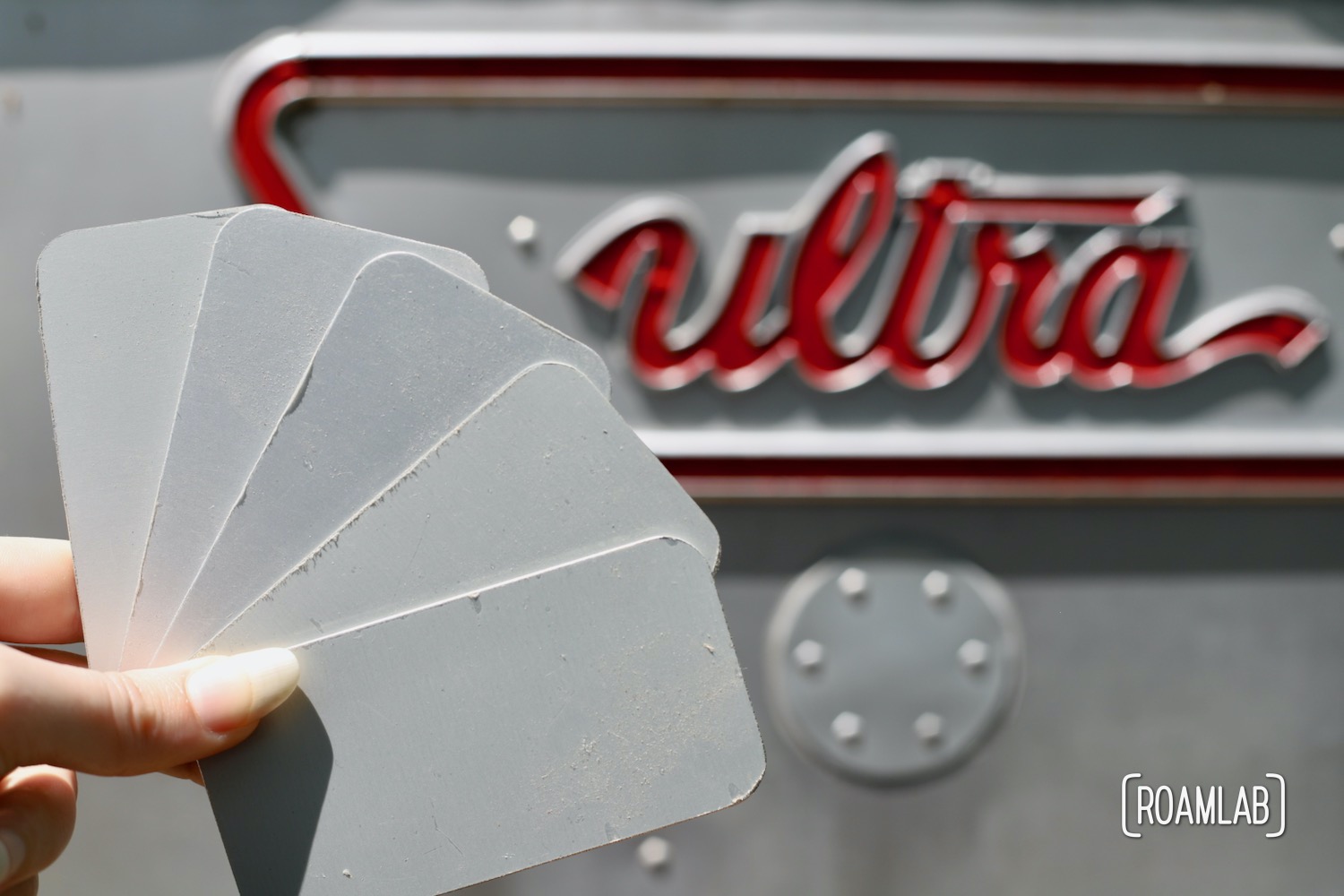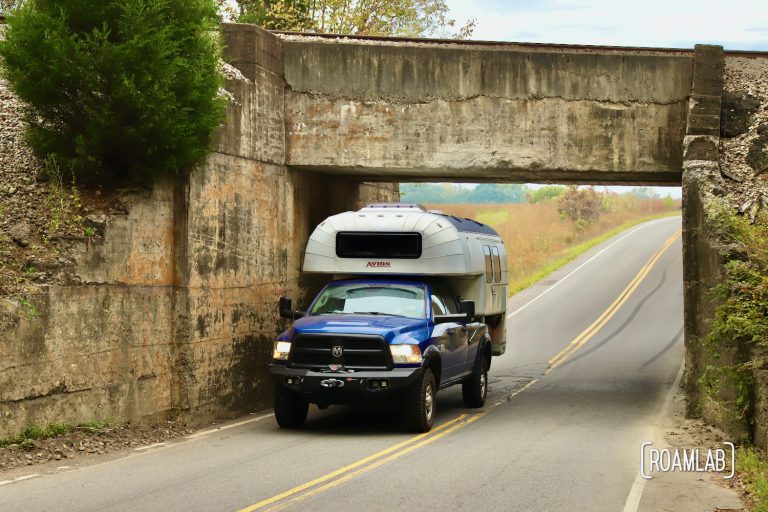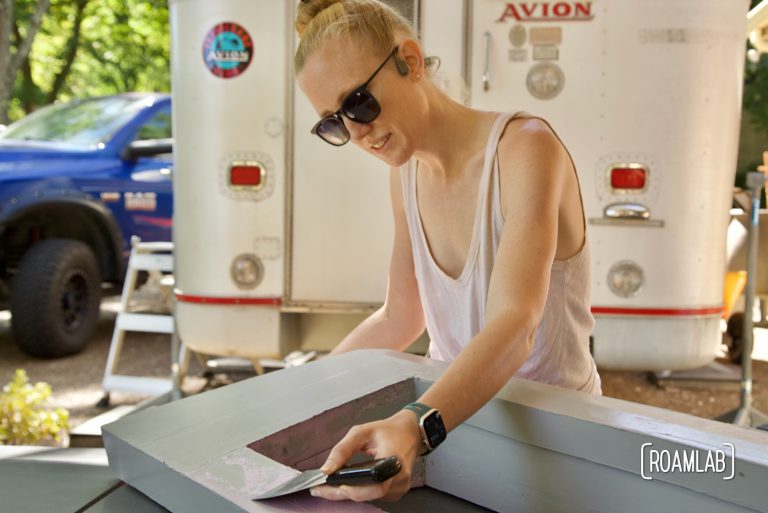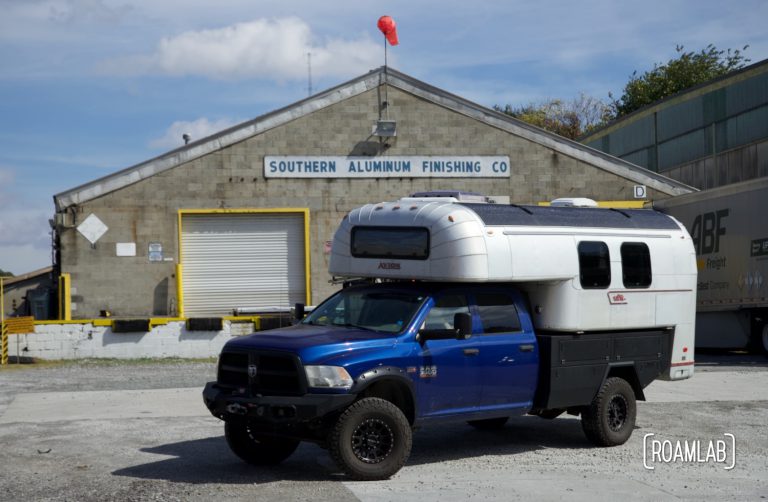When we first bought our 1970 Avion C11 camper, we were delighted by the excellent condition of the exterior aluminum. Of course, that is excellent condition for a 50 year old camper. There is still need for patching and we had plans to extend the cabover from early on. All of this requires fresh aluminum sheet. Like many renovation tasks on vintage campers, sourcing the right material can be surprisingly complicated. For many, the complexity leads renovators to opt for whatever aluminum they find at the local home improvement store. But if you’re willing to take the time to find the right vendor and make the right order, you will be delighted. Don’t worry, we’ll walk you through our experience sourcing the aluminum sheet alloy, anodization, thickness, and dimensions.
As an initial disclaimer, I want to acknowledge that not all Avions are the same. The Avion brand produced a wide range of campers for decades. Our area of focus, the Avion C10 and C11 truck campers, were only produced over a period of a few years to fairly similar designs. Even so, there have been gradual adjustments through those years and different factories sourcing materials. Thus, there is the possibility that there may be some variation between my Avion and yours. I’ll share what I ordered and how I came to that decision. But it’s important that you also measure your own Avion. Order some samples before purchasing a pallet of aluminum that you may not be able to return.
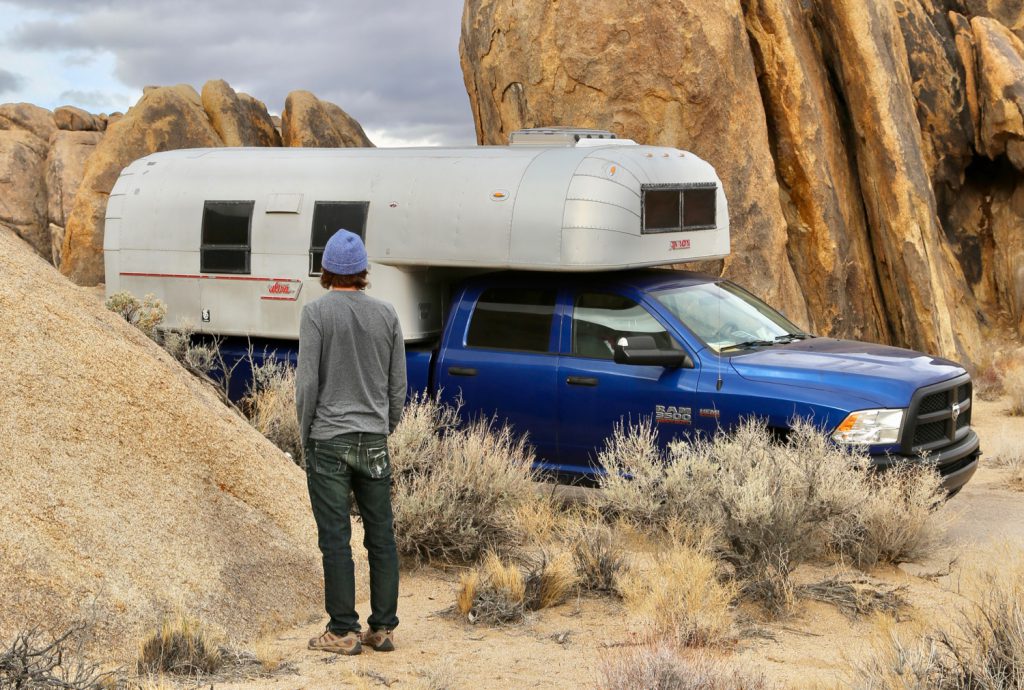
Ordering Aluminum Sheet
As noted before, the aluminum in Avions is fairly unique. It is unlikely that you will readily find it at some local retailer. So, you will have to find a manufacturer that specializes in anodized aluminum. (More on that in a bit). We work with Southern Aluminum Finishing (SAF).
Even working with specialists, the options can be overwhelming. There are so many different variations in aluminum. They each have their own purpose, but you don’t need to know all of them. What you will need to know is the alloy, anodization, thickness, and dimensions of the aluminum you want.
Alloy
You may think an aluminum sheet is just aluminum. Not quite. Each sheet also includes a combination of other metals or elements to create what is known as an alloy. These combinations vary according to your use: optimizing strength, malleability, heat resistance, and other characteristics. For our walls and patches, we are using the same 5005 alloy used in the original Avion campers from 1970. 5005 alloy is commonly used for anodization projects and architectural applications. As we’ll address below, anodization is central to this project and so is 5005 alloy. This is precisely what we want for our Avion restoration.
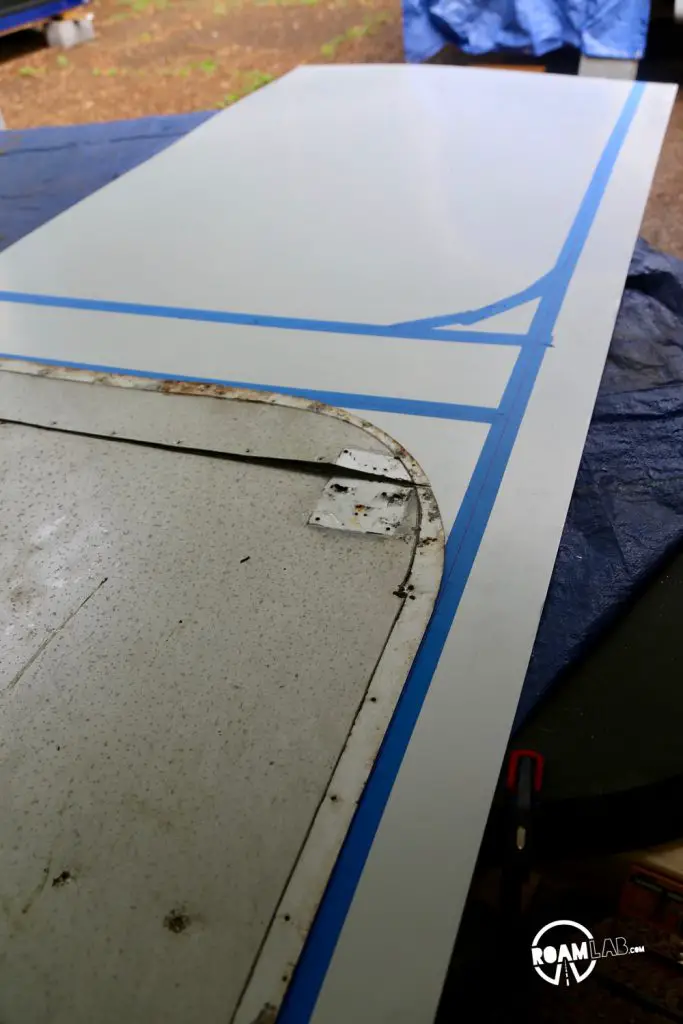

Anodization
Avion campers are one of the rare RV brands that opted for the more expensive anodized aluminum. This results in the satin finish that distinguishes the Avion from Airstreams, Silver Streaks, Spartans, Bowlus Road Chiefs, and other vintage aluminum campers. While the uninitiated may scratch their head and think that Avion owners are simply not polishing their campers, there are many reasons for this look. Foremost among these: anodized aluminum is more durable and resistant to scratching and corrosion. With that, it also spares owners that expensive or time consuming process of polishing.
Even Avion’s Even Avion’s aluminum is different from most others. It’s anodized. Just as tempering makes steel stronger, anodizing makes aluminum harder, tougher. You benefit because your Avion exterior shrugs off corrosion and stains. It resists scratches, dents and abrasion better than ordinary aluminum. You can drive down bushy trails without fear of marring your beautiful Avion.
The incomparable Avion

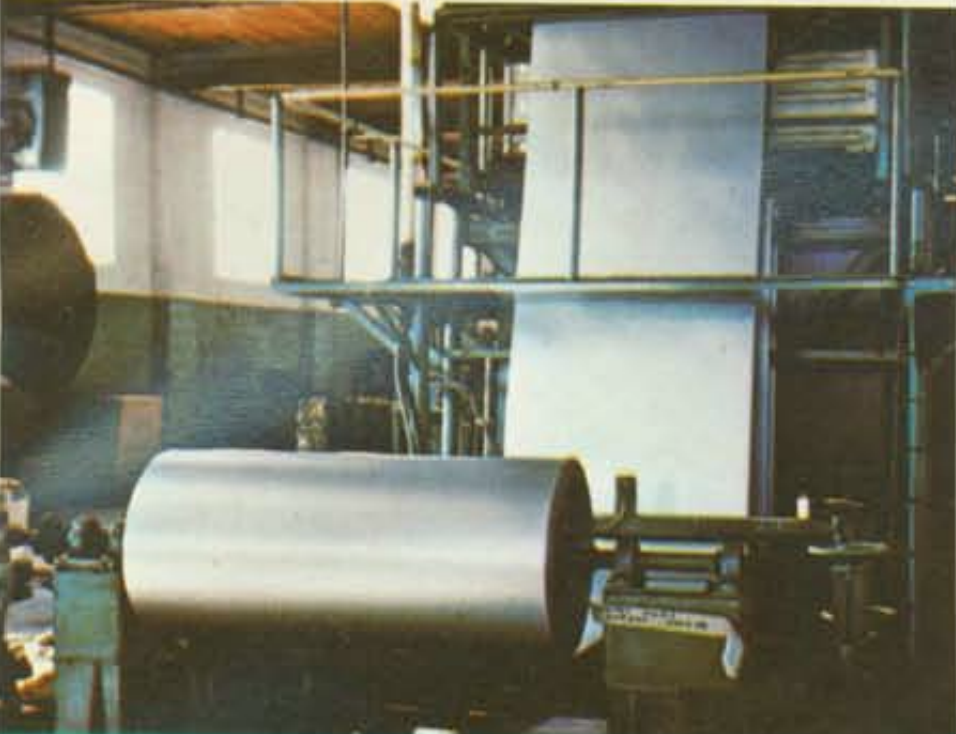
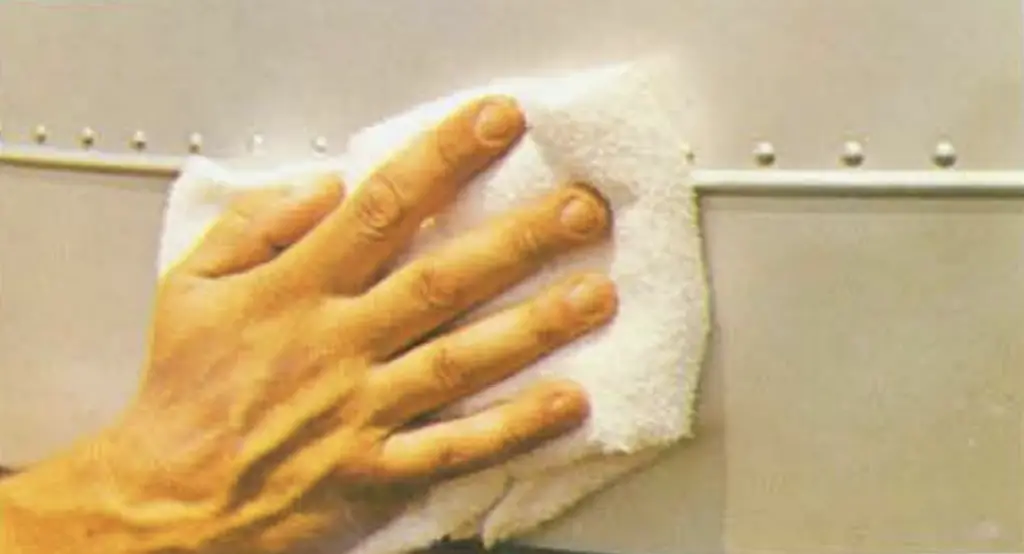
What Is Anodization?
Anodization is an electrochemical process that creates an anodic oxide finish on the surface of aluminum. Aluminum is submerged in an acid electrolyte bath. Next, a current is passed through to trigger a highly controlled oxidation process. Unlike painting or plating, this process integrates into the aluminum substrate. As a result, it will not chip or peel. The delicacy of the process, specialized equipment, and scale of the aluminum sheet all mean that this is something that you want to source from a specialized vendor.
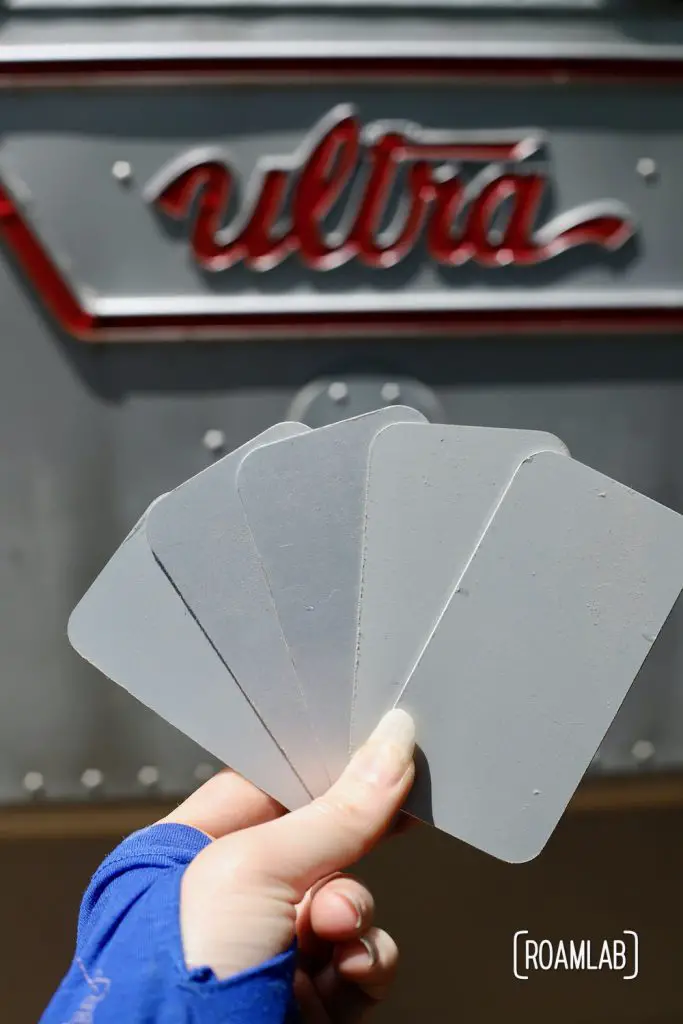
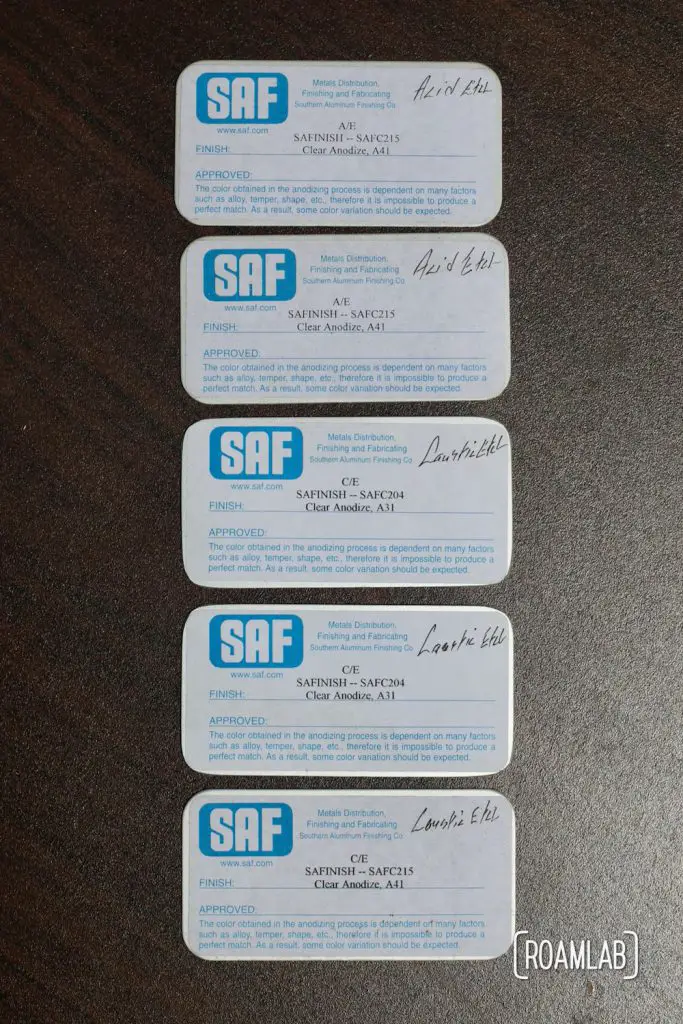
Unfortunately, anodized aluminum makes for a unique challenge when sourcing replacement sheets. Anodization comes in many shades and colors. Aluminum can be clear, black, bronze, or even more colorful anodization treatments. Fortunately, there is an Aluminum Association Designation System that codifies the different finishes. After reviewing a wide range of clear finishes, we selected A31 anodization which is a clear Architectural Class II (0.4 to 0.7 mil coating) finish. We found that this best matched the original exterior of our camper. But I urge you to order a few samples with different clear anodized finishes to compare to your own Avion before settling on one.
A Note On Aging & Sun Exposure
We can attest that anodized aluminum does slightly change with exposure. In the course of our renovation, we have exposed portions of the truck camper that have been protected for sun and general weathering. There is a subtle difference. It’s nowhere near the fading of red paint on the Avion decals or the washed-out blue on the Avion Travelcade Club sticker. Yet, the anodization is a little lighter. So, while our new aluminum does slightly stand out when lit at certain angles, we have good reason to believe that it will gradually age into and even shade over time.
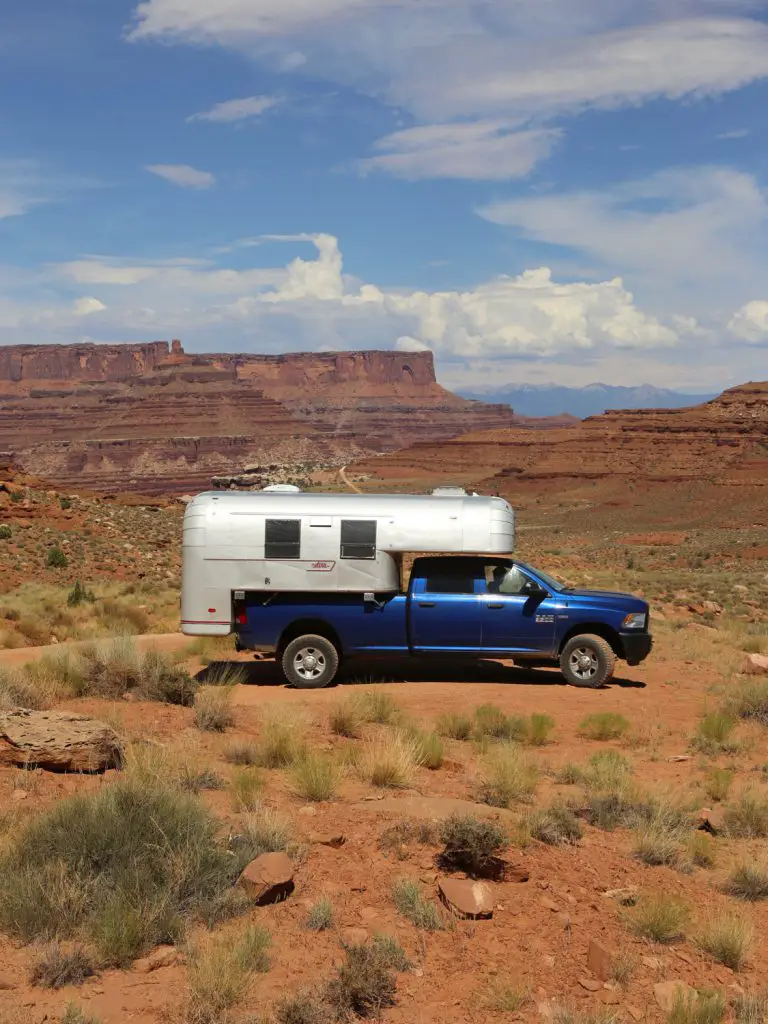
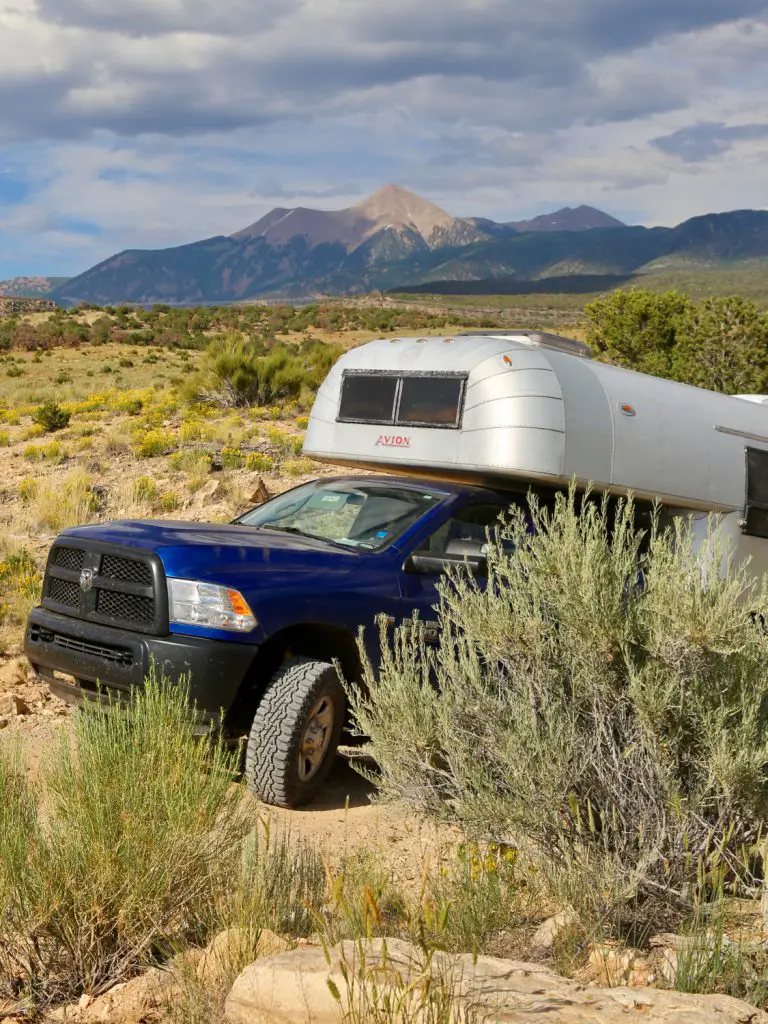
Thickness
The thickness of your aluminum sheet is pretty self explanatory. I have seen the thickness of sheet metal referred to by its gauge, similar to wire size. Even so, when we ordered our aluminum, the unit of measurement used was inches. The original aluminum sheet used for the Avion exterior walls is thicker than the aluminum sheet used on the interior walls. This makes sense, considering so much wear and tear the exterior is exposed to. Using digital calipers, we determined that our exterior skin is 0.04″ thick and the interior skin is 0.032″ thick. For patches and replacements, we follow these thicknesses for those respective walls.
As a side note: the original interior walls were not anodized. Instead, they were painted with Zolatone paint—a textured acrylic paint that adheres remarkably well to aluminum. Some people have successfully stripped Zolatone paint from their aluminum walls. We found that the aluminum underneath was terribly corroded. Not to mention that we did not consider it worth the hassle and danger of removing Zolatone—a process requiring noxious chemicals. So we are doubling down on the anodized look by ordering anodized aluminum for the interior as well.
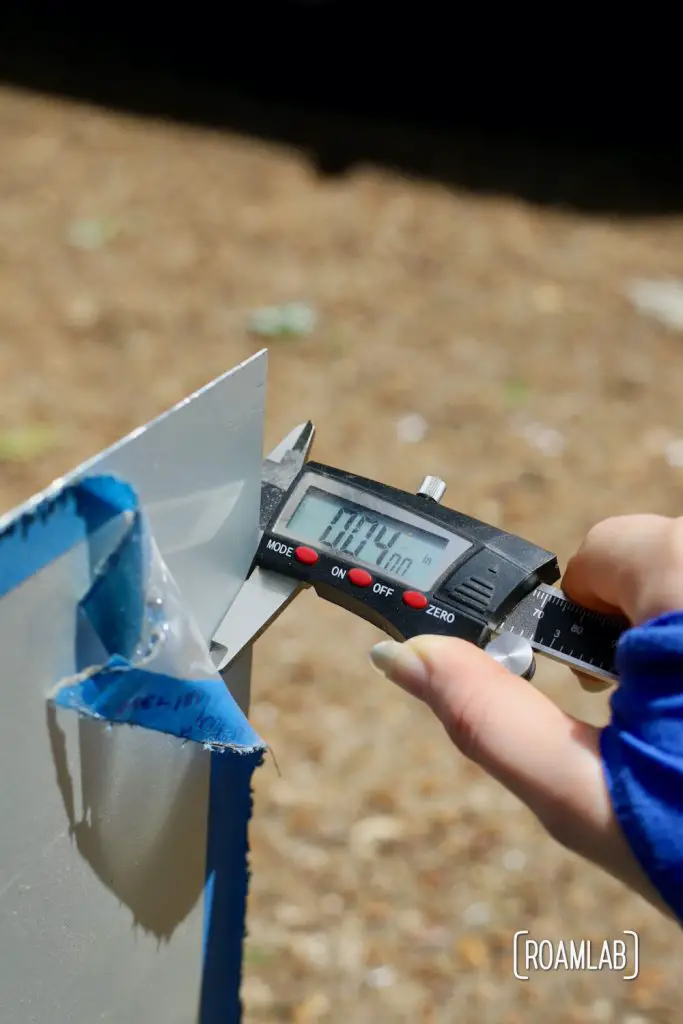
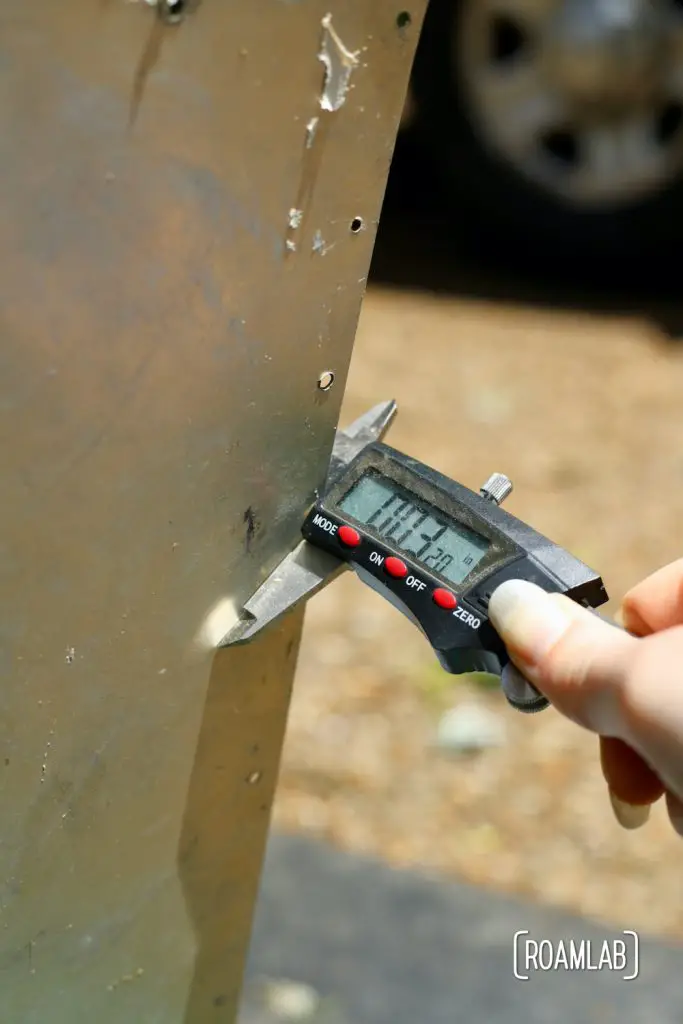
Dimensions
The width and height of each aluminum sheet really come down to your use case. Most aluminum sheets come in 48″ wide pieces at varying lengths. Since we are buying the aluminum for the cabover extension, we need a continuous piece that is at least 94″. We wind up ordering 48″x144″ sheets. Granted, that is likely overkill for most applications.
Of course, I wouldn’t advise getting sheets larger than you need. Storing 48″ x 144″ sheets of aluminum has been a limitation for us. If we didn’t have some particularly large sections of the Avion to cover, we would have ordered smaller pieces. In fact, some vendors will even custom cut pieces for you. If you have a relatively small project, it may be worthwhile having pieces cut by the seller to lower shipping costs.

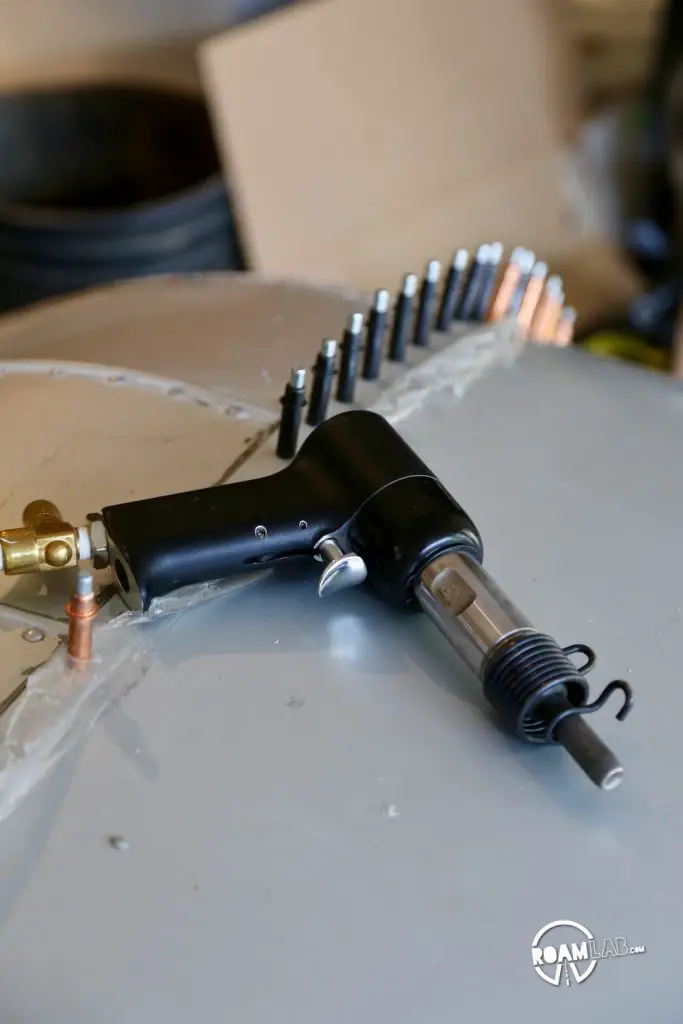
Shipping Costs
Shipping will likely be a significant consideration for any aluminum order. For us, the price for a couple sheets of aluminum equalled the base level shipping costs. The threat of paying that shipping price more than once motivated us to ballpark our total aluminum requirements for the project and make a complete order right then. If you are buying small pieces, your vendor may be small enough to ship through the regular mail. Our aluminum arrived strapped to a massive pallet on an 18-wheeler.
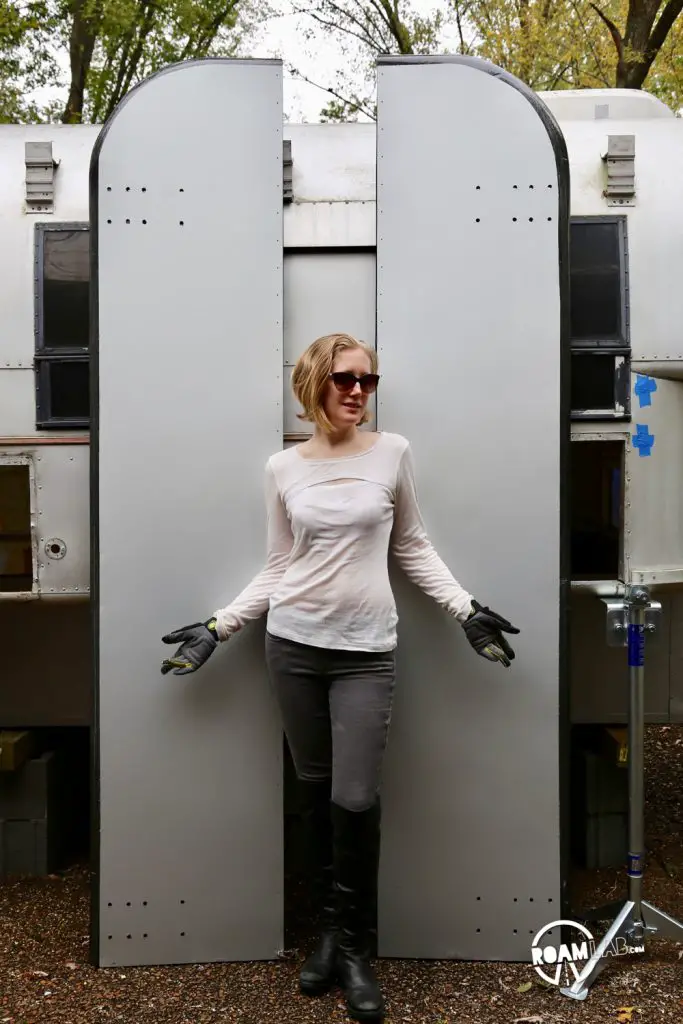
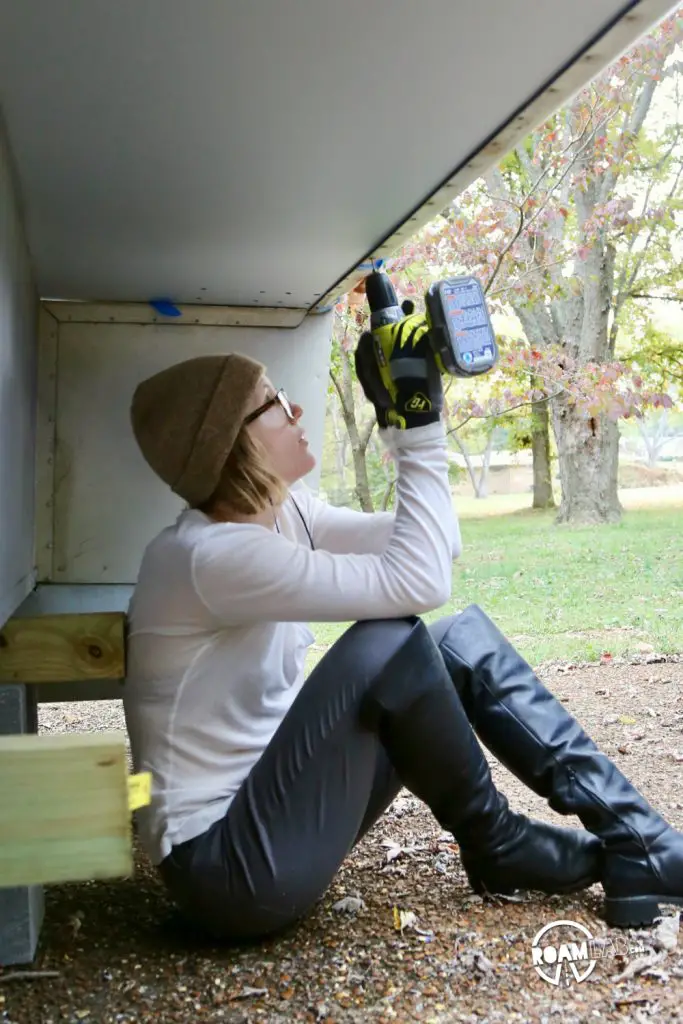
Our Aluminum Sheet Order
We ordered exterior aluminum to replace the camper wings, bulwark, and bed as well as extend the cabover and general patches. For this project, we replaced all of the interior aluminum. Unfortunately, we encountered far too much corrosion on the original interior aluminum to warrant reuse. This means we are ordered 3 exterior aluminum sheets and 4 interior aluminum sheets.
| Use | Finish | Alloy | Thickness | Dimensions | Total |
|---|---|---|---|---|---|
| Exterior | A31 | 5005 | 0.040″ | 48″ x 144″ | 3 |
| Interior | A31 | 5005 | 0.032″ | 48″ x 144″ | 4 |
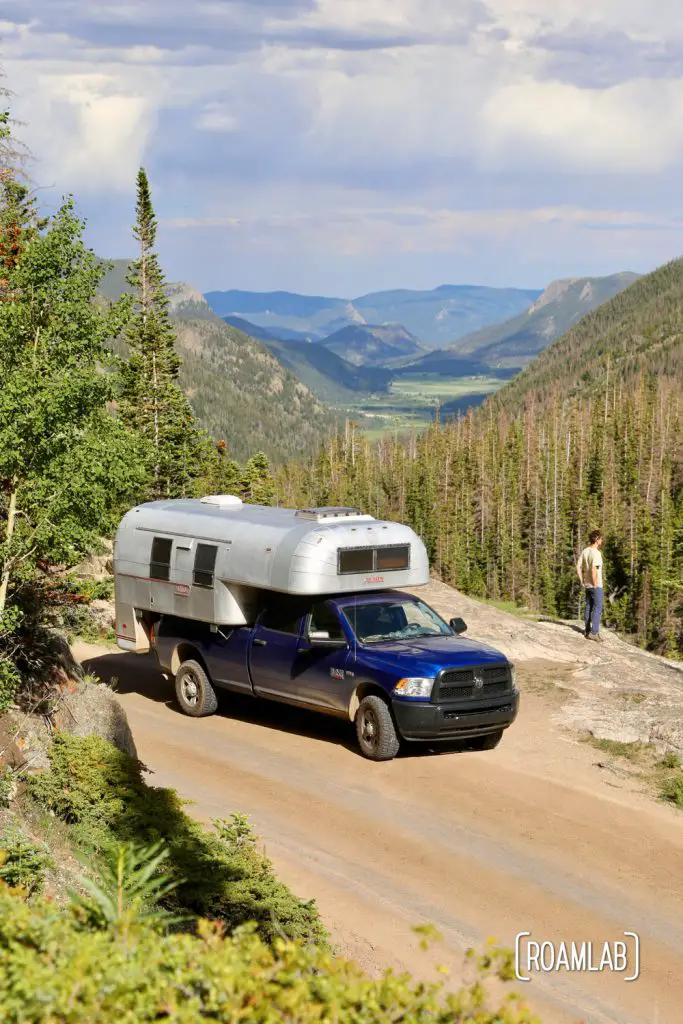

Looking Back on Our Order
This is one of the rare occasions where I’m writing a post years after our decision process. We have been working with our aluminum sheets to patch and augment our camper for three years. The aluminum itself has held up beautifully. Sure, some angles of light may reveal a slightly different shade on patches. Yet, the difference between new and old aluminum is often better noticed by some mild wear on the old aluminum. Even with our large order, we are starting to think we may have underestimated our needs. If the time does come, we’ll be ordering to the same specifications. Though probably slightly smaller sheets.


